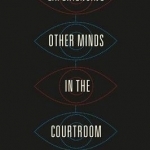Experiencing Other Minds in the Courtroom
BookThis item doesn’t have any media yet
2017 | Law
Sometimes the outcome of a legal case can depend upon sensory evidence known only to the person who experiences it, such as the buzzing sound heard by a plaintiff who suffers from tinnitus as the alleged result of an accident. Increasingly lawyers, litigants, and expert witnesses are attempting to re-create these sensations in the courtroom, using new digital technologies to offer evidence that purports to simulate litigants' subjective experiences and thus to help jurors know not merely know about what it is like to be inside a litigant's mind. But with these advances in courtroom evidentiary practice comes a host of questions: Can anyone really know what it is like to have another person's perceptual experiences? Why should courts admit these simulations as evidence? And how might these simulations alter the ways in which judges and jurors do justice? In Experiencing Other Minds in the Courtroom, Neal Feigenson turns the courtroom into a forum for exploring the profound philosophical, psychological, and legal ramifications of our efforts to know what other people's conscious experiences are truly like.
Drawing on an array of disciplines from cognitive psychology to media studies and science and technology studies, Feigenson harnesses real examples of digitally simulated subjective perceptions to tease out the ways in which the epistemological value of this evidence is affected by who creates it, how it is made, and how it is presented. Through his close scrutiny of the different kinds of simulations and the different knowledge claims they make, Feigenson is able to suggest best practices for how we might responsibly incorporate such evidence in the courtroom, thereby improving the quality of justice for all.
Related Items:
| Published by | The University of Chicago Press |
| Edition | Unknown |
| ISBN | 9780226413730 |
| Language | N/A |
Images And Data Courtesy Of: The University of Chicago Press.
This content (including text, images, videos and other media) is published and used in accordance
with Fair Use.
